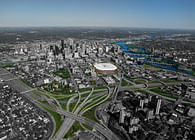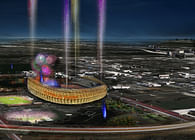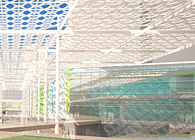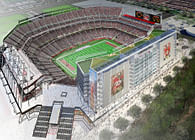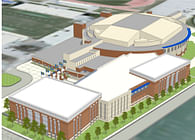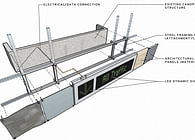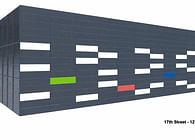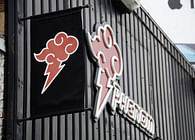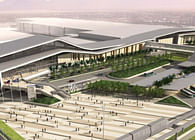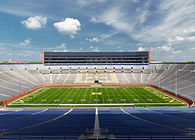
We have come to believe that the “The “American Dream” is a perception. Where the home is not only where you live or where you have your privacy, but is a social pressure of ownership. It is yours and no one else’s. Dwellings should respond to the lifestyles of the modern family, usually changing several times in a generation. In defining the “American Dream” this dwelling blurs living with work and public to private. The site is on an old railroad line that is partially buried which is located in North Hollywood, California. It is located on the median of Chandler Street which surrounds the north and south side. The area has a park to the south and residential to the north. The east side has a small industrial area and a metro stop, and to the west a highway passes above. In the neighborhood of Chandler Street small art galleries are starting to surround the area. In this design proposal the idea of not only one living unit but a series of dwellings to unify the community and existing areas is proposed. The decision to use railroad box cars was not only for cost efficiency, but the modular units provide flexibility that relate to the industrial site. The material that is removed from the exterior for openings is then later reused to form the partitions of the interior spaces. In the parti of the home the morphology of four boxcar can be seen. The third boxcar, being a “void” frames a pedestrian path to the metro stop and allows the community to set outdoor shop and market areas on the weekend. In this design the program also has a studio space for work that is connected to the dwelling with a catwalk above and railroad crossing at grade linking the two ground floors. This studio space has a loft above for a small office or can be transformed to a guest house. The exterior doors/walls and windows of the dwelling are operable and open to the outside “blurring” inside to outside. When open the interior space and volumes change. The east dining room wall opens to the patio and closes the east view from the kitchen window. One viewing the dining room from the exterior would see the dining room with a large volume hovering above (bedroom). Similar changes occur when the main doors of the dwelling and studio are opened. The window planes of the bedrooms slide open to the outside and the window opening becomes an open air balcony to the outside, but the occupant has the ability to close it to the public. The two adjacent bedrooms also share an interstitial space (skylight) that divides the two bedrooms and the kitchen and dining room below. This interstitial space can be seen from the balconies in the two bedrooms, in the hallway outside the bedrooms, and the kitchen and dining spaces below. The space and program of this dwelling are designed to be adaptable to anyone who lives in the space. It blurs work, living, public, and private together.
Status: School Project
Location: West Hollywood, CA, US
My Role: Project Designer
